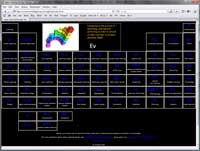The True Cost of Informal Learning
I'm sure many of you have come across the chart similar to the one shown below (chart 1) in which we are shown that 20% of the learning is formal and 80% is informal, yet paradoxical we spend 80% of our training budget on the formal and only 20% on the informal (Cross, 2007):

Chart 1
The trouble with this chart is that while the percentage of learning is basically correct (see The Hype of Learning), the amount we spend on each is based on weak research, with much of that research simply “pulled out of thin air” (Cross, 2007). Even if all the numbers are correct, it does not matter what the Learning department spends, but rather what the organization spends. In addition, if informal learning was really all that efficient, why does it need need our support?
One ASTD research project supported by the U.S. Department of Labor reported that the amount of employer investments in workplace training hovers around $210 billion annually and of that, $30 billion is spent on formal training, while the remainder, $180 billion, is spent on informal and on-the-job training (Carnevale, Gainer, Villet, 1990). Thus, informal learning gets 86% of all learning investments, while formal learning processes get 14% of the total investment.
But if we chart these numbers, it would look like chart 2 below; however, note that it is NOT correct either:

Chart 2
The reason it is wrong is that expenditure for training/learning departments do not count the learners time (hourly wage) spent in formal training, while informal learning expenditure count the workers hourly wages. To get a more accurate cost we need to add the learner's wages to formal learning's cost. Thus, we need to add about 36 billion to the formal learning side, which would give us a chart similar to this:

Chart 3
As we start to get the truer cost of informal learning, we discover that rather than being this highly efficient learning machine, it is probably just about as efficient as formal learning, especially if we use the 70 percent of learning is informal and 30 percent is formal numbers that have the strongest research behind them (Cofer, 2000; Dobbs, 2000).
And if you really think about, it makes sense — just because I'm informally learning does not mean my brain starts working 3 or 4 times faster than when I'm in a formal environment. In addition, formal learning would get the edge if you have a lot of people learning a particular task or subject because rather than each one of them creating their own learning process, you have one designer doing the initial legwork, such as research and design, for everyone.

Thus, rather than being this highly efficient learning machine that we can ignore, it might require just as much of our attention as the formal side of learning. However, not because it costs about the same to perform either, but rather which is the better investment?
We should be spending the majority of our time on 20% of the learning that is most important — remember the Pareto Principle? We should not support something just because there is more of it, but rather what will best benefit the organization?
We need to ask, “What processes are critical for delivering our product/service and do we need to ensure that our workers learn them correctly?” “What tasks are so vital to a process that we have to ensure we educate someone to be a backup?” “How can we best develop our workers so that we continue to grow as a organization?”
These are the true questions we should be asking; NOT what type of learning happens the most.
Next Steps
-
The True Cost of Informal Learning
Informal and Formal Learning are part of the Periodic Table of Agile Learning:
References
Carnevale, A., Gainer, L., Villet, J. (1990). Training in America: The Organization and Strategic Role of Training. San Francisco: Jossey-Bass.
Cofer, D. (2000). Informal Workplace Learning. Practice Application Brief. NO 10. U.S. Department of Education: Clearinghouse on Adult, Career, and Vocational Education.
Cross, J. (2007). Informal Learning: Rediscovering the Natural Pathways That Inspire Innovation and Performance. San Francisco: John Wiley & Sons, Inc.
Dobbs, K. (2000). Simple Moments of Learning. Training 35, no. 1: 52-58.

